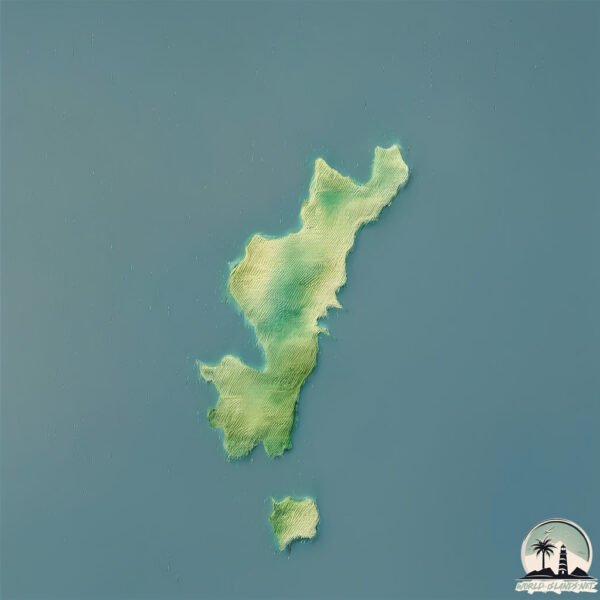Welcome to Illa de Ons , a Temperate island in the North Atlantic Ocean, part of the majestic Atlantic Ocean. This guide offers a comprehensive overview of what makes Illa de Ons unique – from its geography and climate to its population, infrastructure, and beyond. Dive into the details:
Geography and size of Illa de Ons
Size: 4.317 km²Coastline: 15.8 kmOcean: Atlantic OceanSea: North Atlantic OceanContinent: Europe
Illa de Ons is a Small Island spanning 4.3 km² with a coastline of 15.8 km.
Archipel: –
Tectonic Plate: North America – Covers North America and parts of the Atlantic and Arctic Oceans, characterized by diverse geological features and varying levels of seismic activity.
The geographic heart of the island is pinpointed at these coordinates:
Climate and weather of Illa de Ons
Climate Zone: TemperateClimate Details: Hot-Summer Mediterranean ClimateTemperature: Hot Summer
Climate Characteristics: Characterized by hot, dry summers and mild, wet winters, typical of coastal areas with abundant sunshine.
Topography and nature of Illa de Ons
Timezone: UTC+01:00Timezone places: Europe/ParisMax. Elevation: 81 m Mean Elevation: 36 mVegetation: Evergreen Broadleaf ForestTree Coverage: 59%
The mean elevation is 36 m. The highest elevation on the island reaches approximately 81 meters above sea level. The island is characterized by Plains: Flat, low-lying lands characterized by a maximum elevation of up to 200 meters. On islands, plains are typically coastal lowlands or central flat areas.
Dominating Vegetation: Evergreen Broadleaf Forest
Vegetation: 6 vegetation zones – Very Highly Diverse Island
Infrastructure and Travelling to Illa de Ons
Does the island have a public airport? no .
Does the island have a major port? no .
The mean population of Illa de Ons is 411 per km². Illa de Ons is Moderately Inhabited. The island belongs to Spain .
Continuing your journey, Mouchao Da Povoa is the next notable island, situated merely km away.
Illa de Ons
En la ría de Pontevedra se encuentra la Illa de Ons. Forma parte de un archipiélago junto a la Illa de Onza y varios islotes. Ons es ...
Illa de Ons
En la ría de Pontevedra se encuentra la Illa de Ons. Forma parte de un ...
En la ría de Pontevedra se encuentra la Illa de Ons. Forma parte de un archipiélago junto a la Illa de Onza y varios islotes. Ons es ...
Ons Island - Isla de Ons
The Ons Islands (Islas de Ons) are of international conservation ...
The Ons Islands (Islas de Ons) are of international conservation importance and have National Park status in Spain. They are one ...
Spain is classified as Developed region: nonG7: Developed economies outside of the Group of Seven, characterized by high income and advanced economic structures. The level of income is High income: OECD.
News – Latest Updates and Headlines from Illa de Ons
Stay informed with the most recent news and important headlines from Illa de Ons. Here’s a roundup of the latest developments.
Loading...
Please note: The data used here has been primarily extracted from satellite readings. Deviations from exact values may occur, particularly regarding the height of elevations and population density. Land area and coastline measurements refer to average values at mean high tide.

